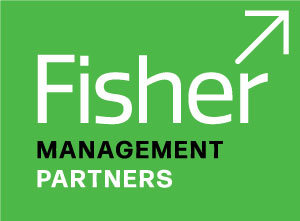The Robots Arrived Over a Decade Ago
RPA is used by 400 of the Fortune 500. Many finance organizations have released RPA capabilities within their organization, providing a tremendous learning experience and visibility into hard dollar business benefits. Leading RPA Vendors are now well-established, offering proven solutions. UI Path began operations in 2005, and now boasts almost 3000 employees. Automation Anywhere launched in 2003 and has 2400 employees. Blueprism went public, while Edgeverve is a well-funded subsidiary of Infosys.
What is a “Bot”?
Robotic Process Automation (RPA) refers to the use of process automation software to create “software robots” that replace repetitive, mundane, and rules-based work. RPA allows employees to focus on more valuable tasks. RPA plays a key role in our Fourth Industrial Revolution – or “Industry 4.0” where digital technologies such as AI, IoT, and RPA are blending and connecting systems at such a pace that human “definition of work” is changing:
- Bots can assume several roles, frequently performing manual work which requires work between legacy systems and repetitive tasks
- Robots can scale – they are software, so you can create and clone “digital workers”
RPA has been a major advancement for Business Process Outsourcing and vendors proving outsourced Finance and Accounting services.
What’s SaaS?
SaaS stands for “Software as a Service”. SaaS software products such as these are cloud-based and typically hosted by the vendor, eliminating any need for corporate IT installation. Typically, there’s no need for software customization, and any upgrades or improvements to the software are automatically released by the vendor to all customers.
Industrial Revolutions
1st Water and steam mechanize production
2nd Electricity enables mass production
3rd Electronics and IT automate production
4th Digitization
Citizen Development
RPA vendors continue to adopt “Citizen Development” attributes – which means the software product can be configured by your Finance personnel for your company’s accounting policies, processing rules, and assignment of user privileges. The most complex areas of effort are data extraction and API’s, which pose few challenges for today’s corporate IT functions.
How to Use Your Digital Workers
Typical opportunity areas for RPA involve attributes common in Finance and Account organizations:
- High-volume, repetitive activities
- Rules/policy-based transactions involving large data sets
- Activities with human intervention or “air gaps” between multiple systems

In addition to these characteristics, many functions will have opportunities for standardization – such as an accounts payable function where individual employees may apply rules in different manners.
RPA in the Columbus Region
Several companies have deployed RPA pilots, and others are already growing their digital workforce. If you’d like to hear first-hand accounts of RPA in the Columbus Region, please attend our 2021 “State of Finance” event to be held next summer.
Examples of RPA
BOTS have been used in a variety of Finance and Accounting areas, including:
- Accounts payable processing
- Processing of expense reports
- Approval of credit card and p-card requests
Lessons Learned
Matching tools to Opportunities: It’s tempting to jump to robotics, but you’re not rebadging employees, you are redefining work. We help your team focus on process automation opportunities before selecting software solutions. Because the redesign of work tasks may be more granular than your prior efforts, the results can be enlightening.
Onboarding staff to the future state: Most employees are pleased to relinquish repetitive work; however, upskilling and training will help alleviate concerns about job disruption and advance your RPA initiative.
Continued Success: RPA typically involves cross functional processes, and management ownership of RPA responsibilities is a common debate. Many companies create a Center of Excellence to maintain ownership, coordinate RPA rollout policies, and hold accountability for successful operations over time.
Download this Article as a PDF

Send download link to:
